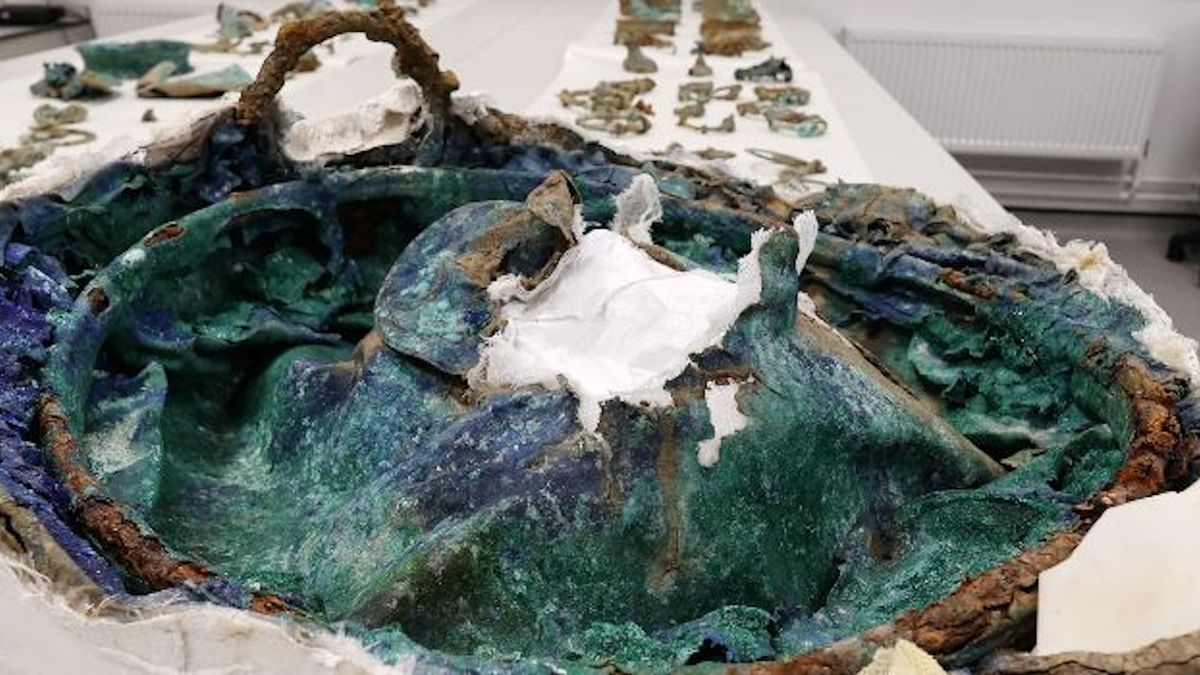An amateur metal detectorist in Northern England has discovered an “unusual” 2,000-year-old hoard of artifacts that was burned and then buried.
The Iron Age finding, named the Melsonby Hoard after the nearby village of Melsonby in North Yorkshire, contains more than 800 artifacts, including a cauldron, wine-mixing bowl, horse riding equipment, pieces of wagons or chariots, a large iron mirror, and ceremonial iron spearheads.
“The bowl we discovered is very interesting because it was a very unusual type — not something you’d normally find in Northern Britain,” said Tom Moore, a professor and head of the Department of Archaeology at Durham University in the U.K. who helped excavate and analyze the hoard.
“Its decoration combines both Mediterranean and British Iron Age styles,” Moore said in a video released by Durham University. This suggests that whoever owned it likely had “a network across Britain and across into Europe and even the Roman world,” he said.
Related: 32 stunning centuries-old hoards unearthed by metal detectorists
Peter Heads, a hobbyist metal detectorist, discovered the hoard in December 2021 after he secured permission from a private landowner to survey a field. He then contacted Moore, who looped in the government and The British Museum, according to a statement released Tuesday (March 25) by Durham University.
“It was only really when we went back to excavate the hoard and we opened up a much larger area that I think Peter and I, and all of the team, realized we were on to something really exciting,” Moore said in the video.
The excavation revealed that the entire find included a small hoard, as well as a large hoard “that was of a kind of scale and size that is exceptional for Britain and probably even Europe,” Moore said.
From the field, the team cut out a large block of earth holding the artifacts and they then had it CT scanned so they could create a virtual, 3D model of it. An analysis revealed that much of the ironwork and copper alloy items had either been burned or broken. It’s possible that these items had been placed in a funerary pyre, although no human bones were found at the site.
“Our working theory at the moment is that [the hoard had] been gathered together and maybe heated in a sort of a big bonfire or perhaps a pyre,” Sophia Adams, curator of the European Iron Age and Roman Conquest Period at The British Museum who is studying the find, said in the video.
After the burning, some of the items appear to have been further damaged as they were thrown into a ditch and had stones tossed on top of them, she said.
Despite the damage, many of the artifacts are still recognizable. Some of the horse harnesses are decorated with red coral from the Mediterranean and colored glass, which hints at far-flung trade.
“The destruction of so many high-status objects, evident in this hoard, is also of a scale rarely seen in Iron Age Britain and demonstrates that the elites of northern Britain were just as powerful as their southern counterparts,” Moore said in the statement.
Researchers are still analyzing the artifacts, and they hope that the finds will one day go on display in a museum, they said in the video.
